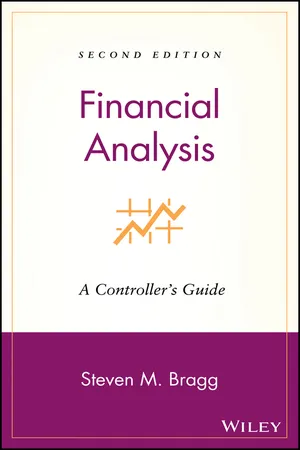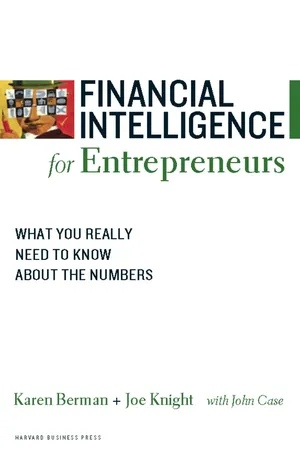Economics
Hurdle Rate
Hurdle rate is the minimum rate of return that an investor expects to receive from an investment. It is used to determine whether an investment is worth pursuing or not. If the expected rate of return is lower than the hurdle rate, the investment is considered too risky and not worth pursuing.
Written by Perlego with AI-assistance
Related key terms
Related key terms
1 of 4
Related key terms
1 of 3
3 Key excerpts on "Hurdle Rate"
- eBook - ePub
Financial Analysis
A Controller's Guide
- Steven M. Bragg(Author)
- 2012(Publication Date)
- Wiley(Publisher)
A company may choose to use several Hurdle Rates, depending on the nature of the investment. For example, if the company must install equipment to make its production emissions compliant with federal air quality standards, then there is no Hurdle Rate at all—the company must complete the work or be fined by the government. At the opposite extreme, a company may assign a high Hurdle Rate to all projects that are considered unusually risky. For example, if capital projects are for the extension of a current production line, there is very little perceived risk, and a Hurdle Rate that matches the cost of capital is deemed sufficient. If the capital expenditure is for a production line that creates equipment in a new market in which the company is the first entrant, however, and no one knows what kind of sales will result, the Hurdle Rate may be set a number of percentage points higher than the cost of capital. Thus, different Hurdle Rates can apply to different situations.Although the Hurdle Rate is the fundamental measuring stick against which all capital investments are evaluated, there is one exception to the rule: the payback period.PAYBACK PERIOD
The primary criterion for evaluating a capital investment is its ability to return a profit that exceeds a Hurdle Rate. However, this method misses one important element—it does not fully explain investment risk in a manner that is fully understandable to managers. Investment risk can be defined as the chance that the initial investment will not be earned back, or that the rate of return target will not be met. Discounting can be used to identify or weed out such projects, simply by increasing the Hurdle Rate. For example, if a project is perceived to be risky, an increase in the Hurdle Rate will reduce its net present value, which makes the investment less likely to be approved by management. Management may not be comfortable dealing with discounted cash flow methods when looking at a risky investment, however; they just want to know how long it will take until they get their invested funds back. Though this is a decidedly unscientific way to review cash flows, the author has yet to find a management team that did not insist on seeing a payback calculation alongside other, more sophisticated analysis methods. - eBook - ePub
Financial Intelligence for Entrepreneurs
What You Really Need to Know About the Numbers
- Karen Berman, Joe Knight(Authors)
- 2008(Publication Date)
- Harvard Business Review Press(Publisher)
When you’re figuring what interest rate to use in calculating present value, remember that you’re working backward. You are assuming your investment will pay off a certain amount in the future, and you want to know how much is worth investing now to get that amount at a future date. So your decision about the interest or discount rate is essentially a decision about what interest rate you need to make the investment at all. You might not invest $100,000 now to get $102,000 in a year (a 2 percent rate), but you might very well invest $100,000 now to get $120,000 in a year (a 20 percent rate). Larger companies typically set a Hurdle Rate—the return they require before they will make the investment—but they typically set it higher for riskier projects than for less risky ones. Smaller companies like your own may not have an explicit Hurdle Rate, but you always have an implicit one; after all, you will inevitably decide to make some investments and not others based on how much you expect the investments to return.There is always some judgment involved in establishing a Hurdle Rate, but the judgment isn’t wholly arbitrary. One factor is the opportunity cost involved. Your company, like any other, has only so much cash, and you have to make judgments about how best to use its funds. That 2 percent return is unattractive because you could do better just by buying a treasury bill, which might pay 3 percent or 4 percent with almost no risk. The 20 percent return may well be attractive—it’s hard to make 20 percent on most investments—but it obviously depends on how risky the venture is. A second factor is your cost of capital. If you borrow money, you have to pay interest. If you use funds from equity investments in the business, your own or somebody else’s, you and the other shareholders expect a return. The proposed investment has to add enough value to the company that debtholders can be repaid and the owners kept happy. An investment that returns less than the company’s cost of capital won’t meet these two objectives—so your Hurdle Rate should always be higher than the cost of capital.That said, decisions about Hurdle Rates are rarely a matter of following a formula. You will have to evaluate how risky a given investment is, how it is likely to be financed, and what your company’s overall situation is. You will have to determine whether the investment can generate a return at least comparable to what you can get elsewhere at a similar level of risk. You have to know how tight the company’s cash position is, how much risk you are comfortable with, and what’s going on in the marketplace you operate in. Then you have to make judgments—assumptions—about what kind of Hurdle Rate makes sense. High-growth companies typically use a high Hurdle Rate because they must invest their money where they think it will generate the level of growth they need. More stable, low-growth companies typically use a lower Hurdle Rate. - eBook - ePub
- Charles Long(Author)
- 2011(Publication Date)
- Urban Land Institute(Publisher)
Economically viable means it produces sufficient profit to repay capital sources and provide adequate compensation to the developer for the time and skill invested. Equity investors and lenders also have Hurdle Rates for minimally acceptable return, but these rates are for components of the project, not the project as a whole. For the developer to evaluate overall project viability in the early stages of a project, it is important to use a Hurdle Rate that measures overall project viability, including debt and equity, and to contract for a land price that contributes to viability. For this purpose, most developers use a simplified approach by establishing a minimum “cash-on-cash project Hurdle Rate,” which is the minimum return on costs that a project must meet to be considered viable. Before discussing how to determine that rate, however, consider the myriad ways that return is expressed—as return on costs, return on sales, and return on equity, among many others. As noted in chapter 2, the rigorous way to measure the return on a project is to calculate its IRR on both a leveraged and an unleveraged basis. Doing so requires looking at the cash flow of the project (which is difficult to determine in the project’s early stages) and calculating the discount rate at which the present value of the income equals the present value of the costs or, if the calculation is of the leveraged return, of the equity investment. If the IRR is sufficiently high to meet the investment criteria of lenders, investors, and the developer, then the project is financially viable. Although readily available financial and spreadsheet software programs make calculating the IRR much easier than in the past, the level of detail necessary to chart expenditures and income by time period requires estimating too many unknowns, making it impractical to apply to a site that a developer is investigating for possible acquisition
Index pages curate the most relevant extracts from our library of academic textbooks. They’ve been created using an in-house natural language model (NLM), each adding context and meaning to key research topics.
Explore more topic indexes
Explore more topic indexes
1 of 6
Explore more topic indexes
1 of 4


